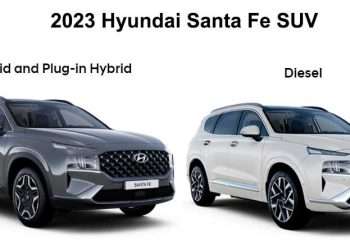The world of motoring has seen many advances in the last three decades. It seems like just yesterday that anti-lock brakes were the gold standard of safety features, and today, our cars practically communicate with us through technology like Heads Up Display (HUD). Let’s journey back in time and see how far we’ve come.
From the Basics to Intelligent Driving: A Brief Overview
The Dawn of Safer Brakes: Anti-lock Braking System (ABS)
In the late 20th century, ABS became a game-changer. Previously, in panic-braking situations, wheels could lock up, sending cars into dangerous skids. ABS, which was initially developed for aircraft in the 1950s, rapidly made its way into mainstream motoring by the 1990s. Using sensors, it monitored wheel speed and released the brakes momentarily to prevent lock-ups, giving drivers more control during emergencies. It set the tone for the following decades: safety through technology.
Tech under the Hood: Advancements in Engine Management Systems
As engines became more complex, a need arose to manage and control their operations with precision. Engine Management Systems (EMS) came into the picture, adjusting factors like fuel injection, ignition timing, and air-to-fuel ratios. This not only enhanced fuel efficiency and performance but also reduced emissions – a growing concern at the close of the 20th century.
Connectivity and Integration: In-Car Infotainment Systems
Remember when a car radio was a luxury? The 2000s ushered in an era where our vehicles started becoming mobile entertainment centres. Touchscreens, GPS, Bluetooth connectivity, and voice command features became the norm. It wasn’t just about playing a song anymore; it was about integrating our digital lives into our driving experience.
Eyes on the Road: The Rise of HUD and Driver Assist Features
The 2010s saw a rise in features aimed at reducing distractions and aiding drivers. Heads Up Display (HUD) emerged as a significant asset, projecting key information onto the windscreen so drivers wouldn’t have to look away from the road. Coupled with advanced driver assistance systems (ADAS) like lane departure warnings, adaptive cruise control, and automatic emergency braking, our cars began to play a proactive role in our safety.
Pillows on Wheels: The Focus on Driver Comfort
It wasn’t all about raw technology and safety. The past 30 years have also been about ensuring the person behind the wheel is comfortable. Memory foam seats, ambient lighting, dual-zone climate control, and noise-cancelling cabins transformed our cars from mere transportation machines to cocoons of comfort.
Driving Towards Tomorrow
It’s a testament to human ingenuity how cars, a century-old invention, keep evolving with time. From simple mechanical vehicles to intelligent, connected machines, motoring has redefined itself with each passing decade. And as we drive towards an electrified, potentially autonomous future, one can only anticipate what the next 30 years will bring.
As the horizon expands, several technological features stand out in the crowd. Features that are not just luxuries but necessities for the modern driver. But which ones have truly reshaped the way we interact with our vehicles?
Top 12 Latest Car High Tech Features

1. Face Connect: Gone are the days of manual locks. Today, a car identifies its driver. The Face Connect, with its deep learning technology, ensures the car responds to the very appearance of the driver, adjusting settings and even unlocking doors seamlessly.
2. Blind-Spot Monitoring: Changing lanes has always been a perilous task, especially on bustling motorways. Blind-spot monitoring offers an extra pair of eyes, ensuring that drivers are made aware of unseen vehicles or obstacles.
3. Virtual External Mirrors: The classic wing mirror gets a futuristic overhaul. By replacing glass with cameras, drivers now have a clearer, broader, and more adaptable view of their surroundings.
4. Smartphone Integration: Modern drivers demand connectivity on the go. Integrating smartphones with the car’s infotainment system allows seamless access to music, navigation, and other apps, right from the car’s dashboard.
5. Drowsiness Detector: Fatigue has been a silent culprit in many accidents. Detecting signs of drowsiness and alerting the driver is a crucial advancement in preventing mishaps due to fatigue.
6. Surround View Camera System: Parking and tight-space manoeuvring have never been easier. With a 360-degree view, drivers get a bird’s eye perspective, eliminating guesswork.
7. Launch Control: For speed enthusiasts, optimising acceleration has been transformed into a science. With Launch Control, cars can achieve the best possible acceleration from a standstill.
8. Pedestrian Detection: Urban areas are synonymous with bustling streets. The pedestrian detection system is a boon, potentially preventing accidents by alerting the driver or even taking automatic evasive action.
9. Vehicle Summon Feature: With autonomous technology seeping in, the capability of a car to drive itself to its owner, even for short distances, is no longer a sci-fi fantasy.
10. Magic Body Control: Bumpy roads are a thing of the past with this suspension system. By ‘reading’ the road, it offers drivers a silky-smooth ride.
11. Night Vision: Darkness is no longer a hindrance for drivers. Night vision ensures obstacles and animals, often out of headlight reach, are visible and identifiable.
12. Augmented Reality Head-Up Display (AR HUD): Combining data and reality, the AR HUD projects vital information directly on the windshield, ensuring drivers remain informed without shifting their focus from the road.
The Boundless Road Ahead
From the simplicity of the anti-lock brakes on the Mercedes Benz W116 (the first S-Class 1976) to modern marvels like the AR HUD, the motoring world has witnessed a transformation that was once the stuff of dreams. As the automobile industry continues to meld with the tech world, drivers can expect their cars to be safer, smarter, and more connected than ever before. The roads of the future beckon, and with these advancements, they promise to be journeys of comfort, safety, and innovation.
In the heart of motoring – The Bournemouth Observer.









